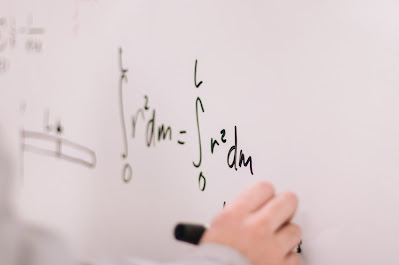Earth history
The history of the earth is
calculated after the earth is made up of parts of the primitive solar nebula.
Scientists estimate that it is between 4.6 billion and 5 billion years. And
because it is difficult to express such a long time, the history of the earth
can be simulated as twenty-four hours (the time when the earth is formed is set
to zero in the morning, and this time is now at zero in the morning of the next
day), about every second represents In 53,000 years, the time of the Big Bang
and the formation of the universe was about 13.7 billion years ago. In terms of
simulation time, it was about three days ago, that is, two days before the
birth of the earth.
ORIGIN
The earth is a planet, with the
birth of the solar system. When the solar system was born, it existed in the
form of huge and constantly rotating clouds of dust and gas. It is composed of
hydrogen and helium generated by the Big Bang, and also has other elements
synthesized inside the planet a long time ago. 15 to 30 minutes before the birth
of the earth (equivalent to about 4.6 billion years ago), a nearby star may
have formed a supernova explosion, sending a shock wave to the solar nebula and
shrinking it. As the cloud collapses, the temperature rises, the rotation
accelerates and flattens. As the cloud rotates, gravity and inertia press the
cloud into a circular dish, perpendicular to its axis of rotation. Most of the
mass is concentrated in the center and heating begins. At the same time, the
gravitational force caused the matter to shrink around the dust particles,
causing the rest of the disc to begin to break down into rings. The small
fragments collide with each other and form larger fragments.The Earth's matter
is composed of about 150 million kilometers from the center. When the sun shrinks
and is heated, nuclear fusion begins, and the resulting solar wind clears most
of the material in the disc that has not shrunk and composed of larger
individuals, leaving only a few elements. Afterwards, the heavier elements
gathered near the sun to form small, dense stars (terrestrial planets); the
lighter elements gathered farther away from the sun to form large,
lower-density stars (Jupiter), and the earth is the third closest planet to the
sun
Moon Formation
The origin of the moon is still
widely divided, but the supporting evidence of the big collision theory is the
most. The earth may not be the only planet created 150 million kilometers from
the sun.scientists hypothesized that another primitive planet was formed 150
million kilometers from the sun and the earth, at the fourth or fifth
Lagrangian point. This planet is named Thea, and it is assumed to be smaller
than the current Earth, about the size and mass of Mars. Its orbit should be
relatively stable at the beginning, but then it was disturbed by the increasing
mass of the earth. Theia began to turn around and move closer to the earth, and
finally collided with the earth at a low angle at about 0:11 am (about 4.53
billion years ago) of the hypothetical clock. Its low speed and low angle are
not enough to destroy the earth, but enough to cause most of the crust to be
ejected. The heavy metals that make up for Theia sink into the earth's core,
while the remaining material and ejection condense into an independent entity
within a few weeks. Under the influence of its own gravity, within a year, it
becomes a more spherical entity, that is, the moon. It is also believed that
this impact tilted the earth's rotation axis by 23.5 °, which made the earth
appear in four seasons (a simple, perfect star should be a season in which the
rotation axis is not tilted and there is no distinct season). It may also
accelerate the rotation speed of the earth and cause plate tectonics on the
earth.
Crustal
Formation
The Earth's early atmosphere
included material in the solar nebula surrounding it, especially lighter gases
such as hydrogen and helium, but the solar wind and the heat of the earth
itself emptied this atmosphere. The surface of the earth slowly condensed,
forming a solid crust at 0:47 (4.45 billion years ago) at (approximately a
hypothetical clock).
At about 3 to 4 am (4 billion to
3.8 billion years ago), assuming a clock, the Earth experienced a period of
heavy star impact. Steam escaped from the crust, and more gas was released from
the volcano, forming a second atmosphere. This new atmosphere may contain
ammonia, methane, water vapor, carbon dioxide, nitrogen, and other lesser
gases. Oxygen is bound by hydrogen or minerals on the surface. Volcanic
activity occurs frequently, and because there is no ozone layer protection, a
large amount of ultraviolet rays shine on the surface of the earth. More water
is brought when the fire meteor hits the earth.
Ocean Formation
This was 3.8 billion years ago,
when the earth began to cool and the temperature of the atmosphere dropped,
forming a torrential rain that lasted for millions of years. All the water
pooled to form the ocean (recent evidence suggests that the ocean may have
formed 4.2 billion years ago, ie this entry assumes 1:50 am of the clock)














Comments
Post a Comment